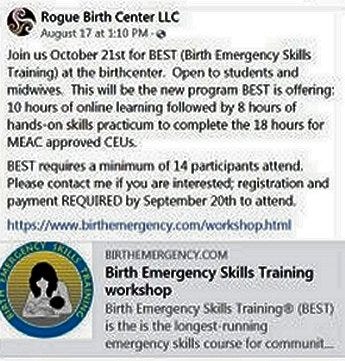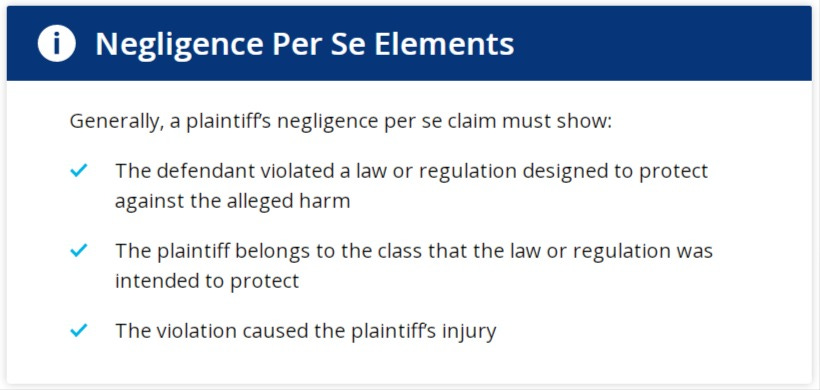October, 2022
Rogue Birth Center (RBC) midwives held a “Birth Emergency Workshop”.
Oregon Rules and our records continued to be studied.
November, 2022
Final Autopsy Report:
I. Normally developed newborn female
II. No evidence of developmental anomaly
III. No evidence of natural disease, such as infection
IV. Small right neck soft tissue hemorrhage, consistent with difficult delivery
V. Vaginal delivery with breech presentation and head entrapment
Vaginal breech delivery is associated with a higher risk of complications, including death due to hypoxia (low-oxygen delivery) due to compression of the umbilical cord during prolonged delivery and/or head entrapment. Umbilical cord compression leads to hypoxia which can be fatal.
Follow-up Questions:
Was Amirah a still birth; did she die intrauterine?
RBC midwives documented an umbilical cord pulse and note attempts at breathing.
Breech + loss of amniotic fluid (80 hrs.) + cord compression causing hypoxia + entrapped head — How could there have been good cord pulse and color after this amount of time?
Like some of the other questions, having an obstetrician review the medical records would be very helpful for this issue. Since the RBC records do not document loss of amniotic fluid based on their assessment, it is impossible for me to confirm that this fluid was, in fact, amniotic. Head entrapment can be associated with cord compression, but it ‘s possible that there was some degree of partial head entrapment at the beginning of the delivery, during which time the cord was not entrapped and continued to show good pulsation.
Rachael’s vitals were never assessed prior to admission or at any point thereafter, and only Doppler was used, and there is a high rate of maternal-fetal heart tone confusion, so we question whose heart tones these midwives charted.
A VALID POINT; an obstetrician could provide more data on the validity of fetal heart tone assessment using Doppler. [emphasis added]
Everything about Amirah was absolutely perfect: all her little organs were fully formed and ready to sustain her life outside the womb. Her head was entrapped for 1 minute, 3 seconds — this is not long in comparison to other cases where the infants lived after several minutes of entrapment, some with permanent brain damage, of course.
Amirah’s death resulted from ignoring her breech position at 20 weeks to term, then ignoring the amniotic sac rupture at 39 weeks, to ignoring the 18 hr. GBS rule as well as the 24 hr. rupture of membrane rule (in general), to ignoring fetal monitoring at least every 30 minutes during active labor, to ignoring the first sign of distress/meconium, to admitting Rachael into RBC without assessing her vitals. There’s more, but it would be easiest to list what they did correctly — nothing.
RBC MIDWIVES are responsible for the easily preventable death of Amirah Rayne. They inflicted criminal levels of neglect in order to kill this vibrant little life and forever impact the lives of her parents, and all who love her.
They really would prefer that we just shut up and go away. How dare we point out how much RBC midwives’ care is like playing Russian roulette with these women playing God, choosing who lives, who dies and who will be injured, scarred and traumatized. All while chanting, some babies just die.
(NOTE: December, 2022 through April, 2023 continues below criminal code information.)
We ask the Court of Public Opinion:
How many Rule Violations must occur before Intent is undeniable?
Does falsifying medical records show intent?
Does lying to parents by omission show intent?
Does making up terms such as “cervical fluid” for vaginal leaking that matches all characteristics of amniotic fluid, show intent?
Why didn’t RBC midwives send Rachael to the hospital for another diagnostic of the fluid, knowing from the Amnicator insert that these tests are not to be solely relied upon — does this show intent?
Did they refuse to do that because they knew that not only would amniotic fluid be detected, but also Amirah’s breech presentation, meaning she would be born by cesarean in the hospital, and they wanted that baby born at RBC NO MATTER WHAT so they would receive the OHP money? Did they put a $6,000 price on her life? Does this show intent?
How did they get EMTs to stay at RBC and NOT CALL POLICE when Amirah was dead on-scene? Does this show intent?
Was there anything that they did right, or was Rachael and Amirah’s care fraudulent from the beginning, starting with the lack of informed consent in signing RBC forms? Does this show intent?
Is this medical malpractice (and how with inadequately educated/trained/experienced high school grads with online ‘professional’ certifications) — or is this a form of murder by midwives? (a prosecutor would make that determination.)
Negligence Per Se in a Civil Suit
The key element of any traditional negligence per se action is that the jury no longer has to consider whether the defendant's actions were reasonable or not. The defendant's actions are assumed to be unreasonable if the conduct violates an applicable rule, regulation, or statute. The jury still will determine whether the conduct violated the statute and caused the accident, but the standard of care is assumed.
Rules are governed by Statutes.
ORS 161.067: DETERMINING PUNISHABLE OFFENSES FOR VIOLATION OF MULTIPLE STATUTORY PROVISIONS, MULTIPLE VICTIMS OR REPEATED VIOLATIONS.
(1) When the same conduct or criminal episode violates two or more statutory provisions and each provision requires proof of an element that the others do not, there are as many separately punishable offenses as there are separate statutory violations.
(2) When the same conduct or criminal episode, though violating only one statutory provision involves two or more victims, there are as many separately punishable offenses as there are victim. […]
(3) When the same conduct or criminal episode violates only one statutory provision and involves only one victim, but nevertheless involves repeated violations of the same statutory provision against the same victim, there are as many separately punishable offenses as there are violations, except that each violation, to be separately punishable under this subsection, must be separated from other such violations by a sufficient pause in the defendant’s criminal conduct to afford the defendant an opportunity to renounce the criminal intent. […] [1987 c.2 §13; 1991 c.386 §9; 2003 c.629 §4; 2007 c.684 §3; 2017 c.318 §1].
RBC midwives had 4 months to renounce criminal intent against Rachael & Amirah: April 5, 2022 to July 24, 2022 - maybe beyond, but Amirah should’ve been born on the 24th.
Remember this?
WHY are RBC midwives at this BIRTH center emphasizing Baby DEATH and GRIEVING Parents on July 1, 2022?
Is this some pretense of compassion? Actions Speak Louder Than Words.
The foresight is uncanny. Playing us for fools, brazen in their intent.
Psychopaths of varying degrees often manifest this weird impulse to cryptically and mischievously signal -- to both victims and co-conspirators -- the evil that they have done or are about to do. —Mike King
Please raise your voices LOUDLY with ours and demand criminal charges be brought against Rogue Birth Center for the senseless death of Amirah Rayne by these medical professional impostors.
ORS 161.085 CULPABILITY DEFINITIONS
Definitions with respect to culpability. As used in chapter 743, Oregon Laws 1971, and ORS 166.635, unless the context requires otherwise:
(1) “Act” means a bodily movement.
(2) “Voluntary act” means a bodily movement performed consciously and includes the conscious possession or control of property.
(3) “Omission” means a failure to perform an act the performance of which is required by law.
(4) “Conduct” means an act or omission and its accompanying mental state.
(5) “To act” means either to perform an act or to omit to perform an act.
(6) “Culpable mental state” means intentionally, knowingly, recklessly or with criminal negligence as these terms are defined in subsections (7), (8), (9) and (10) of this section.
(7) “Intentionally” or “with intent,” when used with respect to a result or to conduct described by a statute defining an offense, means that a person acts with a conscious objective to cause the result or to engage in the conduct so described.
(8) “Knowingly” or “with knowledge,” when used with respect to conduct or to a circumstance described by a statute defining an offense, means that a person acts with an awareness that the conduct of the person is of a nature so described or that a circumstance so described exists.
(9) “Recklessly,” when used with respect to a result or to a circumstance described by a statute defining an offense, means that a person is aware of and consciously disregards a substantial and unjustifiable risk that the result will occur or that the circumstance exists. The risk must be of such nature and degree that disregard thereof constitutes a gross deviation from the standard of care that a reasonable person would observe in the situation.
(10) “Criminal negligence” or “criminally negligent,” when used with respect to a result or to a circumstance described by a statute defining an offense, means that a person fails to be aware of a substantial and unjustifiable risk that the result will occur or that the circumstance exists. The risk must be of such nature and degree that the failure to be aware of it constitutes a gross deviation from the standard of care that a reasonable person would observe in the situation. [1971 c.743 §7; 1973 c.139 §2]
ORS 161.095 Requirements for criminal liability.
(1) The minimal requirement for criminal liability is the performance by a person of conduct which includes a voluntary act or the omission to perform an act which the person is capable of performing.
[…]
PARTIES TO CRIME
ORS 161.150 Criminal liability described. A person is guilty of a crime if it is committed by the person’s own conduct or by the conduct of another for which the person is criminally liable, or both. [1971 c.743 §12]
ORS 161.155 Criminal liability for conduct of another. A person is criminally liable for the conduct of another person constituting a crime if:
(1) The person is made criminally liable by the statute defining the crime; or
(2) With the intent to promote or facilitate the commission of the crime the person:
(a) Solicits or commands such other person to commit the crime; or
(b) Aids or abets or agrees or attempts to aid or abet such other person in planning or committing the crime; or
(c) Having a legal duty to prevent the commission of the crime, fails to make an effort the person is legally required to make. [1971 c.743 §13]
ORS 161.160 Exclusion of defenses to criminal liability for conduct of another. In any prosecution for a crime in which criminal liability is based upon the conduct of another person pursuant to ORS 161.155, it is no defense that:
(1) Such other person has not been prosecuted for or convicted of any crime based upon the conduct in question or has been convicted of a different crime or degree of crime; or
(2) The crime, as defined, can be committed only by a particular class or classes of persons to which the defendant does not belong, and the defendant is for that reason legally incapable of committing the crime in an individual capacity. [1971 c.743 §14]
ORS 161.170 CRIMINAL LIABILITY OF CORPORATIONS.
(1) A corporation is guilty of an offense if:
(a) The conduct constituting the offense is engaged in by an agent of the corporation while acting within the scope of employment and in behalf of the corporation and the offense is a misdemeanor or a violation, or the offense is one defined by a statute that clearly indicates a legislative intent to impose criminal liability on a corporation; or
(b) The conduct constituting the offense consists of an omission to discharge a specific duty of affirmative performance imposed on corporations by law; or
(c) The conduct constituting the offense is engaged in, authorized, solicited, requested, commanded or knowingly tolerated by the board of directors or by a high managerial agent acting within the scope of employment and in behalf of the corporation.
(2) As used in this section:
(a) “Agent” means any director, officer or employee of a corporation, or any other person who is authorized to act in behalf of the corporation.
(b) “High managerial agent” means an officer of a corporation who exercises authority with respect to the formulation of corporate policy or the supervision in a managerial capacity of subordinate employees, or any other agent in a position of comparable authority. [1971 c.743 §16]
ORS 161.175 Criminal liability of an individual for corporate conduct. A person is criminally liable for conduct constituting an offense which the person performs or causes to be performed in the name of or in behalf of a corporation to the same extent as if such conduct were performed in the person’s own name or behalf. [1971 c.743 §17]
ORS 163.005: CRIMINAL HOMICIDE
(1) A person commits criminal homicide if, without justification or excuse, the person intentionally, knowingly, recklessly or with criminal negligence causes the death of another human being.
(2) “Criminal homicide” is murder, manslaughter, criminally negligent homicide or aggravated vehicular homicide.
(3) “Human being” means a person who has been born and was alive at the time of the criminal act. [1971 c.743 §87; 2007 c.867 §4]
RBC MIDWIVES CLAIMED THAT AMIRAH WAS ALIVE UPON DELIVERY; therefore, Amirah has Constitutional Rights.
ORS 163.145: CRIMINALLY NEGLIGENT HOMICIDE
(1) A person commits the crime of criminally negligent homicide when, with criminal negligence, the person causes the death of another person.
(2) Criminally negligent homicide is a Class B felony, punishable by 10 yrs. prison / $250,000 fine or both.
********************************************************************
December, 2022
Complaint filed with Health Licensing Office (HLO)/Board of Direct-Entry Midwifery (all RBC midwives).
Complaint filed with Health Care Regulation & Quality Improvement (birth center).
Complaint filed with OHA Fraud department.
Complaint filed with Grants Pass Police Department.
January, 2023
Interviewed by HLO/Board Investigators
Grants Pass Police Department claimed medical malpractice, sent report up to DHS/OHA.
February, 2023
OHA Fraud Department took our case up to Oregon Department of Justice (DOJ) Fraud Division.
Retired MD-OB volunteered to review records and act as an expert witness in our case.
March, 2023
Oregon DOJ Fraud Division refused to take our case.
OHA Fraud Department opened an audit into RBC records.
Sent case information to Oregon State District Representatives.
April, 2023
Found a piece of dried up umbilical cord tucked in placental capsules jar (month has been corrected in our previous post).
Sent Josephine County Public Health information and a list of questions regarding the processing, manufacturing, and safety testing of RBC Placental Encapsulation.
Civil attorney says he wants to get our suit filed ASAP.
Sought studies on stillbirth, intrauterine asphyxiation, amniotic fluid, and reviewed stages of death & rates of decomposition, and gained valuable insight.
Researched data on mortality/morbidity in Out-of-Hospital (OOH) Birth (see below).
Long-term data clearly shows that it’s more dangerous to birth outside a hospital for obvious reasons of personnel, expertise and equipment. Emergencies are emergencies precisely because you don’t see them coming!
So while birth is a normal, natural process in many cases, others are situations where mother and baby simply need some help.
RBC midwives (and so many others) tell parents nonchalantly that whatever is abnormal is normal; that women’s bodies and babies know what to do, as critical minutes tick away while their babies suffer and die or are born with severe, irreversible brain damage and other health problems. In other words, not the life they could have had. Or the mother dies. Or both mother and baby die.
These midwives just walk away and forget about all the “unsuccessful births” as they colloquially call them. There’s no wall of Dead Rogue Babies at RBC, but if you got a live one, by all means, send in a pic!
Often these midwives abandon parents at the end of the pregnancy, when relied upon the most. Our abandonment unknowingly had been ongoing for 4 months—since Amirah’s Breech Ultrasound.
Whether lay midwives ‘like’ the data or not, the FACTS are that women and babies are safer and risks for morbidity and mortality are reduced based upon location — in a hospitals with medically degreed, trained and experienced professionals who have malpractice-liability insurance, and are technicians trained to use advanced equipment and technology.trained
We can’t emphasize enough that YOU MUST RESEARCH EVERYTHING & BECOME YOUR OWN BEST ADVOCATE.
***Remember that Birth Centers are nothing more than another home, except it’s a corporate entity (an LLC), ill-equipped in every way to respond to emergencies. It doesn’t matter how close the hospital is to the home, especially if degenerate midwives are in attendance, as our case clearly shows.
These studies present legitimate data in direct contradiction to MANA/NARM, etc. fraudulent representation of other countries’ data as if it applies to the United States. Deception all the way to the top of the heap.
Early and total neonatal mortality in relation to birth setting in the United States, 2006-2009
The impact of birth settings on pregnancy outcomes in the United States









